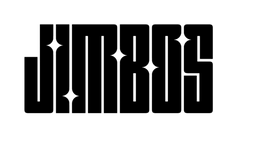Hand Polish vs. Machine Polish – Which Gives Better Results?
Can you really correct your paint with just a foam pad and elbow grease? That’s what Carfidant’s polish method suggests—but does it hold up to real-world results? We compared it to machine polishing with Picture Perfect Polish to find out.
What Carfidant Recommends
Carfidant's polish system is designed for hand use only. The process is simple: apply the product to a foam pad, rub it into the paint with moderate pressure, and wipe it off.
It’s designed for beginners and marketed as a “quick fix” to light scratches and swirls.
Pros:
- Safe for complete beginners
- Doesn’t require tools or power
- Very low risk of damage
Cons:
- Limited correction power – hand pressure isn’t enough to fix most defects
- Inconsistent results – varies depending on how hard or evenly you rub
- No ability to scale – takes forever to do a whole car
The Pad-Dependent Advantage of Picture Perfect Polish
Picture Perfect Polish is designed for use with machines—DA, rotary, or forced rotation. That said, it’s still safe for hand use. But where it shines is with the proper pad and tool combo.
You can tailor your cut and finish simply by switching pads:
- Burgundy pad = more cut, great for swirls and oxidation
- Black pad = softer, ideal for refining and glossy finishes
Benefits:
- More consistent results – same pressure and motion across the panel
- Much faster – full car polishing in 30–45 minutes instead of hours
- Real correction – removes defects instead of just masking them
Head-to-Head Paint Test
We tested both methods on the same car, same panel. One half was hand-polished using Carfidant, the other by DA polisher using Picture Perfect Polish with a black pad.
- Carfidant: Minimal change. Gloss improved slightly, but swirls and RIDS (random isolated deep scratches) remained.
- Picture Perfect: Panel looked drastically clearer and deeper. Swirls removed, no hazing, mirror-like finish.
And we were done in half the time—with zero mess or dusting.
The Verdict: Hand Polish Is Safe—But Not Effective
If you're just looking to boost shine and aren’t worried about swirls or fine scratches, hand polishing might give you some improvement. But for true paint correction and that pro-level finish, machine polishing with Picture Perfect Polish is the clear winner.
And with modern polish technology, it’s safer than ever—even for first-timers.
Recommended Tools
- Picture Perfect Polish
- Burgundy Cutting Pad – For medium-to-heavy defects (coming soon)
- Black Finishing Pad – For final polish or soft paint (coming soon)
- Dual Action Polisher – Easy to use, safe for beginners
Related Posts
- Carfidant Scratch Remover vs. Picture Perfect Polish
- Compound vs. Polish – What’s the Difference?
- Paint Correction for Beginners



